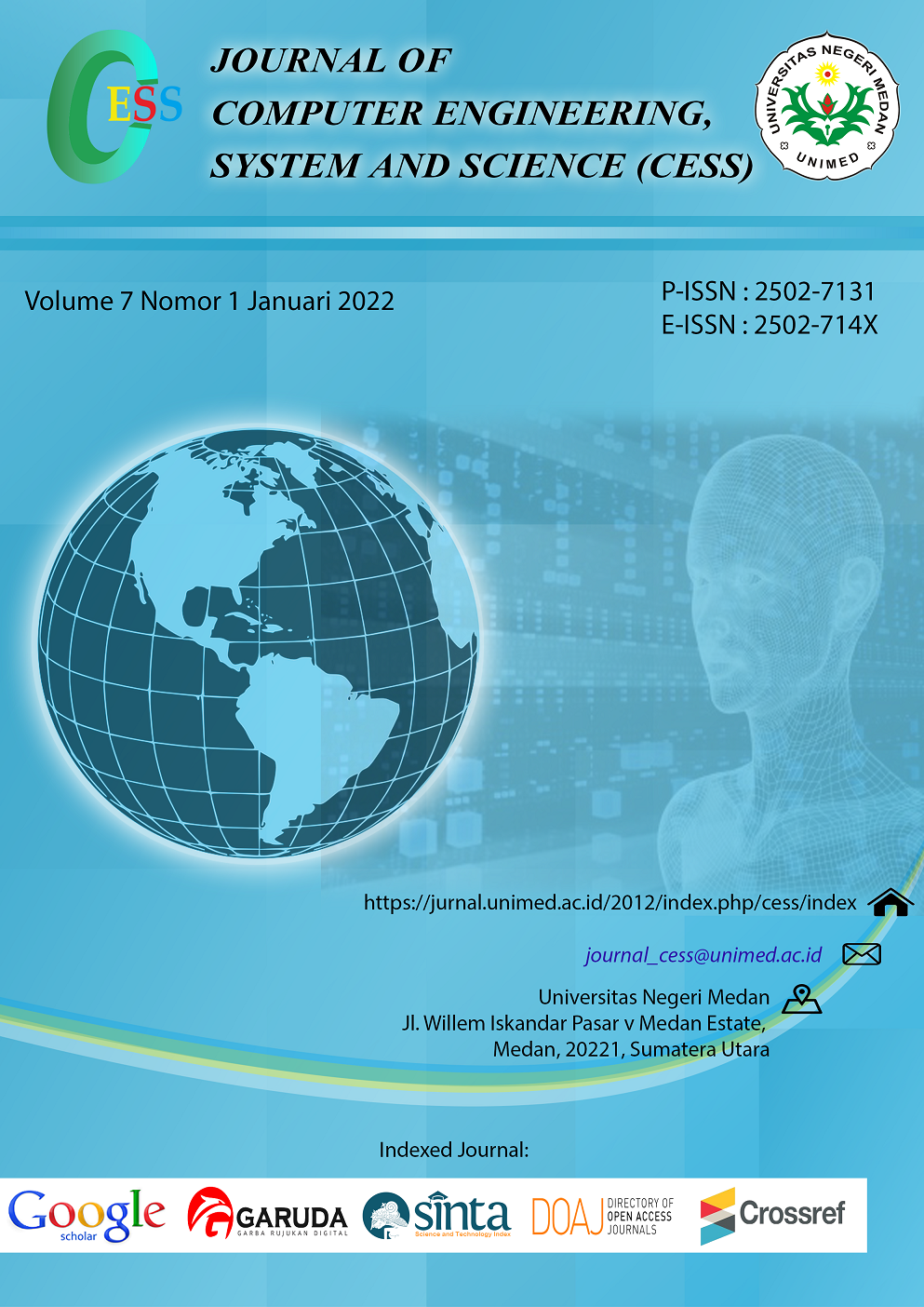Comparative Analysis of 16-QAM and 64-QAM Modulation in Additive White Gaussian Noise and Rayleigh Fading Channels
DOI:
https://doi.org/10.24114/cess.v7i1.26729Keywords:
16-QAM and 64-QAM Modulation, AWGN, Rayleigh FadingAbstract
This reseach simulates and analyzes paramaters bit error rate (BER) of 16-QAM and 64-QAM modulation on Additive White Gaussian Noise and Rayleigh Fading channels. This research aims to determine 5G modulation with the level of data quality after the transmission process is carried out. The modulation simulation results obtained will be compared with the theoretical bit error rate (BER). The simulation results obtained from the two channel scenarios used are 16-QAM modulation reaching BER 10-4, AWGN channel only requires 15 dB Eb/N0 and for Rayleigh Fading channel it requires 38 dB Eb/N0. The BER theoretical results obtained for the 16-QAM modulation of the AWGN channel have a difference of 3 dB with the simulation results, while for the Rayleigh Fading channel it is 5 dB. Then, the simulation results of 64-QAM modulation AWGN channel to achieve BER 10-4 requires Eb/N0 of 24.6 dB, Rayleigh Fading of 47 dB. The theoretical results of BER obtained for the 64-QAM modulation of the AWGN channel have a difference of 1 dB with the simulation results, while for the Rayleigh Fading channel it is 0.5 dB. In this study, between 16-QAM and 64-QAM 5G modulation is more suitable to use 16-QAM modulation because it requires less power to achieve the desired BER 10-4.Downloads
References
I. K. Fenta Febriyandi, œRekomendasi ITU Pada Alokasi Spektrum 5G di Indonesia ITU, Bul. Pos dan Telekomun., vol. 20, pp. 1“6.
T. Y. Muhammad Daffa Rheza, Rina Pudji Astuti, œSistem Antena Pemancar MIMO (4x4) Menggunakan Multi Substrat dan Aie GAP pada frekuensi 3,5 Ghz untuk komunikasi 5G, e-Proceeding Eng., vol. 0, p. 1712, 2021.
S. L. KHOIRUN NI™AMAH and Program, œProyeksi EXIT Chart untuk Memprioritaskan Data Komunikasi Manusia pada Jaringan Super Padat, Elkomnika, vol. 7, no. 3, pp. 508“520, 2019.
C. A. Egbunugha, C. A., Akaneme, S. A, Nwabueze, œPerformance Analysis of MIMO-OFDM System on Different Digital Modulation Schemes Egbunugha, IJIETS, vol. 4, pp. 139“154, 2021.
N. M. A, œPropagasi Sinyal Pada Kanal Fading Komunikasi Bergerak, 2017. .
dan T. S. Angga Yuda Prasetya, Suwadi, œImplementasi Modulasi dan Demodulasi M-Ary QAM pada DSK TMS320C6416T, Tek. POMITS, vol. 2, no. 1, pp. 37“39, 2013.
E. T. 138 211, œ5G NR Physical channels and modulation, 3GPP TS 38.211 version 15.2.0 Release 15, vol. 15, no. 2, p. 15, 2018.
M. T. Nurul Aisyah Jafar, Yuyun Siti Rohmah, S.T., M.T., Suci Aulia, S.T., œPERANCANGAN SIMULATOR TEKNIK MODULASI M-ARY QAM MENGGUNAKAN MATLAB Simulator, Openlibrarypublications-telkomuniversity, 2018. https://openlibrarypublications.telkomuniversity.ac.id/index.php/appliedscience/article/view/7512/7400.
J. H. Lia Astari, Heroe Wijayanto, œAnalisis Kinerja Modulasi Wavelet Pada Kanal Gaussian dan Kanal Rayleigh Fading, Trektika-Penelitian dan Pengemb. Telekomun. Kendali, Komputer, Elektr. dan Elektron., vol. 8, pp. 78“85, 2003.
B. N. M. Simamora and R. Fauzi, œAnalisis Unjuk Kerja Ekualizer Pada Sistem Komunikasi Dengan Algoritma Stop and Go, Singuda ENSIKOM, vol. 8, no. 3, pp. 158“164, 2014.
M. Ferio Dheaputro, Yuyun Siti Rohmah, ST., MT., Afief Dias Pambudi, ST., œPERANCANGAN SIMULATOR MODULASI DAN DEMODULASI 16-QAM DAN 64- QAM MENGGUNAKAN LABVIEW DESIGN, e-Proceeding Appl. Sci., vol. 1, no. 2, pp. 14“50, 2015.
A. K. Wahyu Pamungkas, Anggun Fitrian Isnawati, œModulasi Digital Menggunakan Matlab, Infotel, vol. 4, pp. 1“9, 2012.
Downloads
Published
How to Cite
Issue
Section
License
Copyright (c) 2021 CESS (Journal of Computer Engineering, System and Science)

This work is licensed under a Creative Commons Attribution 4.0 International License.















